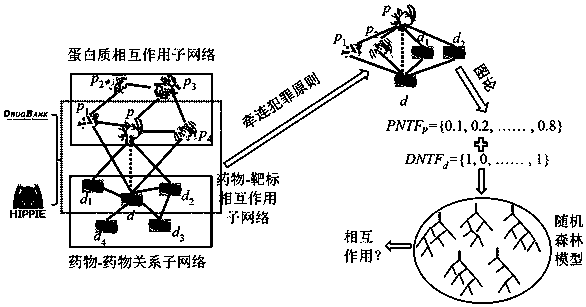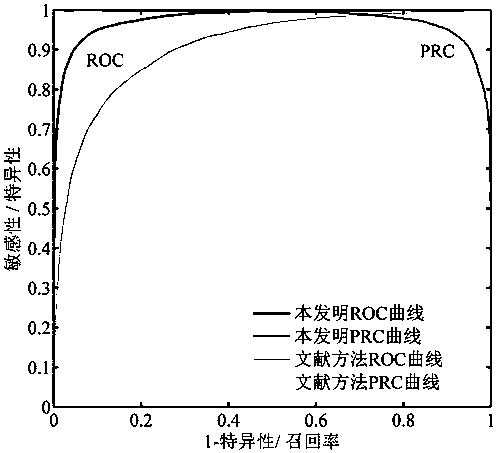A Drug-Target Interaction Identification Method Based on the Principle of Implications and Network Topological Structure Features
A network topology and identification method technology, applied in the field of computer-aided drug design, can solve problems such as ignoring physical chemistry, not considering protein-protein interaction, not considering the integrity and robustness of biological networks, etc.
- Summary
- Abstract
- Description
- Claims
- Application Information
AI Technical Summary
Problems solved by technology
Method used
Image
Examples
Embodiment 1
[0059] 1. Collect data sets and construct drug-target interactome network
[0060] (1) Collect human protein interaction information from the HIPPIE database, and remove self-interactions, repeated interactions, and interactions with an interaction score of 0. According to the protein acquisition number, the protein sequence information was obtained from the UniprotKB / Swiss-Prot database, and the amino acid composition, dipeptide composition, autocorrelation descriptors and protein primary structure descriptors such as composition, transition and distribution were calculated. Based on the collected information, a node- and edge-weighted human protein-protein interaction subnetwork is constructed. Node weights are protein primary structure descriptors and edge weights are protein interaction scores.
[0061] (2) Collect drug-target interaction information from the DrugBank database, and abolish interaction data where the target does not belong to humans. According to the stru...
PUM
 Login to View More
Login to View More Abstract
Description
Claims
Application Information
 Login to View More
Login to View More - R&D
- Intellectual Property
- Life Sciences
- Materials
- Tech Scout
- Unparalleled Data Quality
- Higher Quality Content
- 60% Fewer Hallucinations
Browse by: Latest US Patents, China's latest patents, Technical Efficacy Thesaurus, Application Domain, Technology Topic, Popular Technical Reports.
© 2025 PatSnap. All rights reserved.Legal|Privacy policy|Modern Slavery Act Transparency Statement|Sitemap|About US| Contact US: help@patsnap.com



